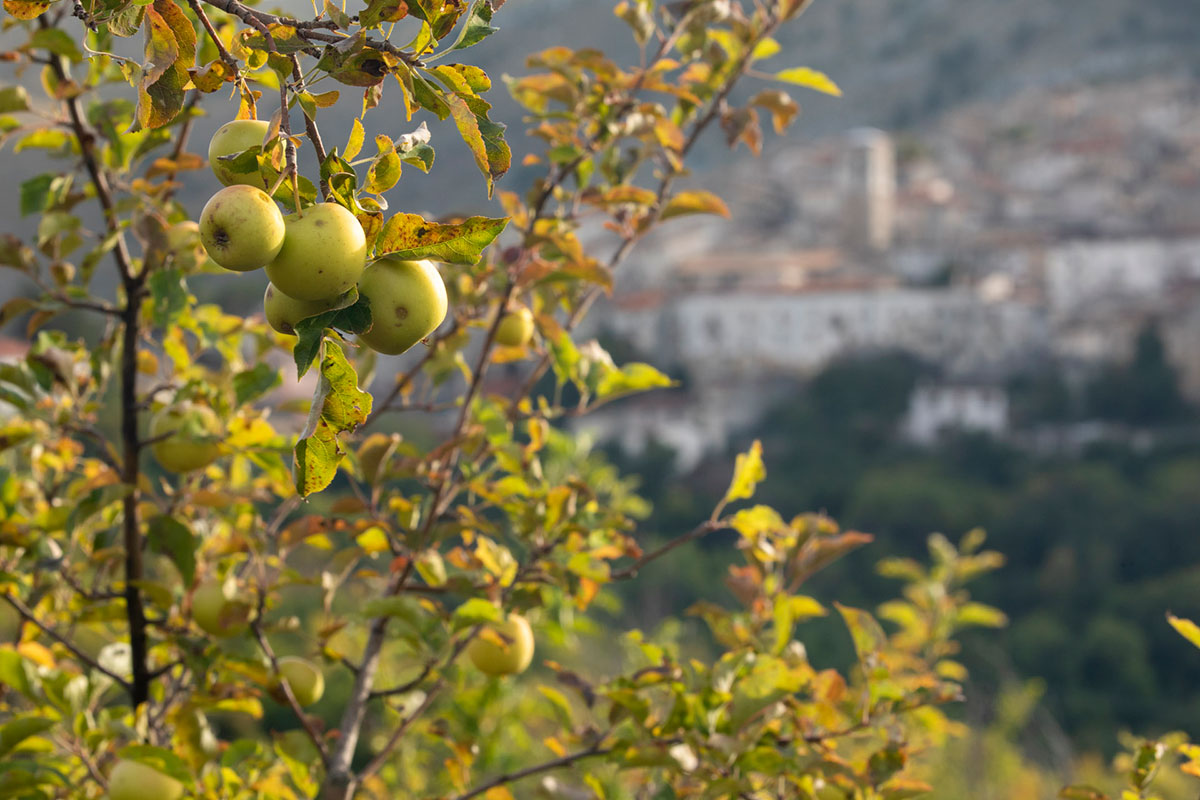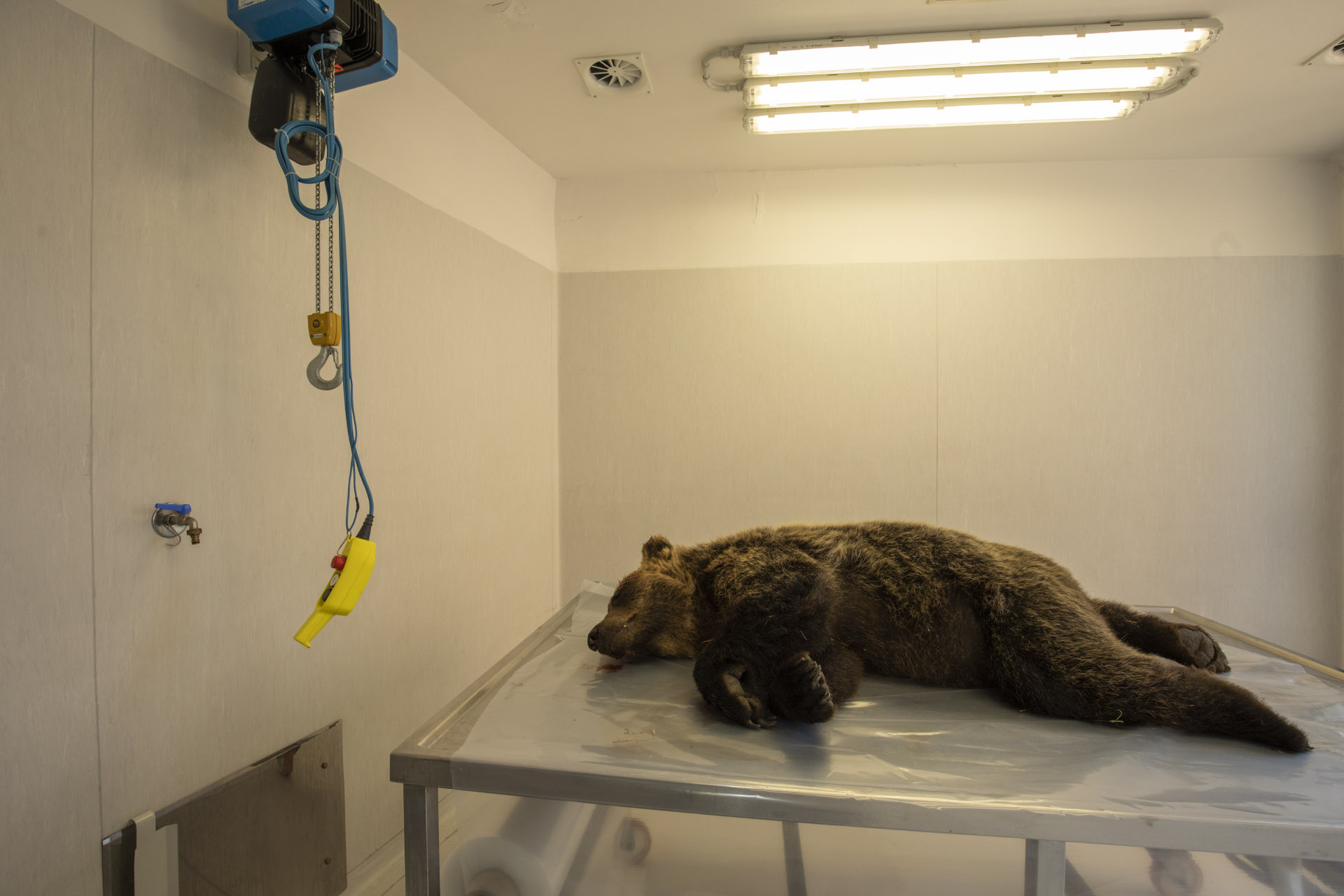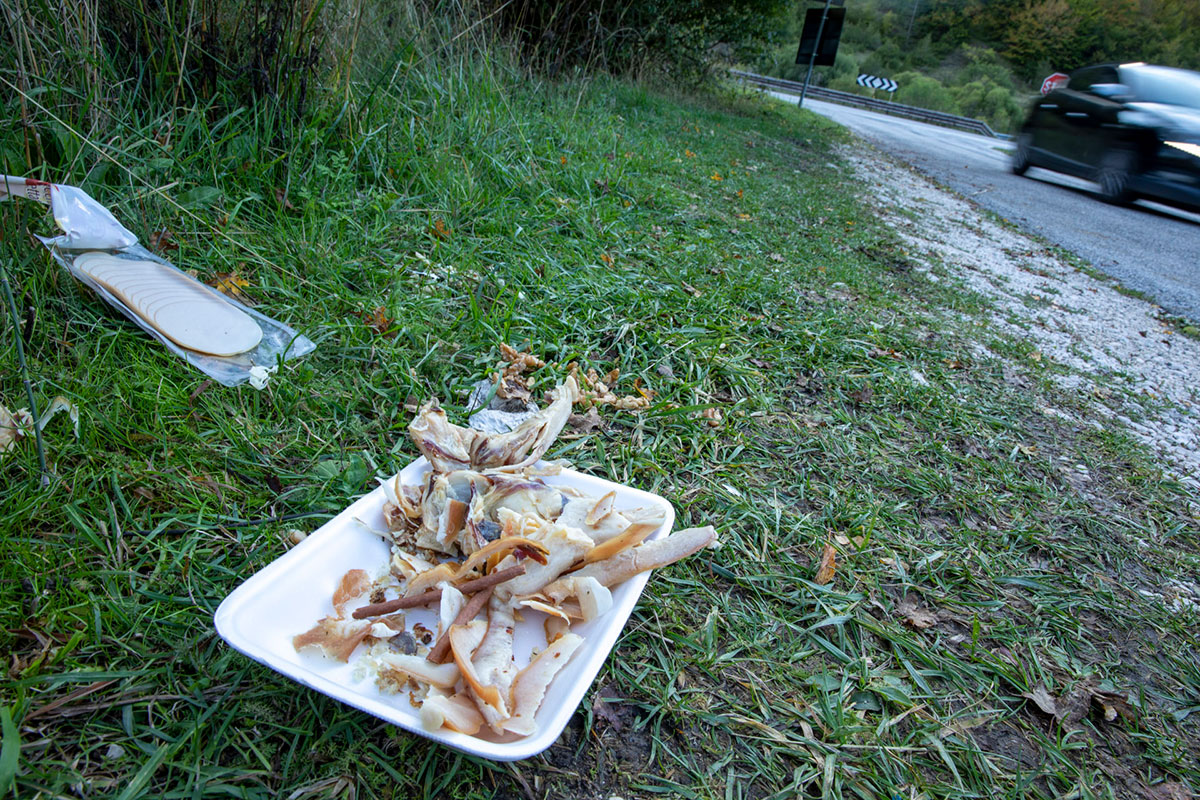Bears and roads
Is the bear crossing the road or the road crossing the bear’s land, a matter of perspective
The shape of dead animals along a road is a common sight in almost every country in the world. Animals move about in search of food, water and mates and if roads cut through their territory, they have no choice but to cross them.
People on the other hand also use roads for their needs. If the paths of bears and humans cross unexpectedly, both are at risk. Every year around the world, millions of wild animals are killed by vehicles, tens of thousands of people are injured, hundreds are killed and the economic damage can run into many billions. In every Italian province, it is estimated that more than 15,000 animals are hit by vehicles every year. The phenomenon is increasing and should not be underestimated, because accidents can significantly reduce the survival of some animal species, as well as restricting their movements. Animals such as bears that move over vast areas and do not reproduce every year can be dramatically affected by the presence of roads, especially when their numbers are limited, as in the Apennines. Accidents increase with the speed of vehicles, volume of traffic, density and number of road lanes and presence or absence of possible obstacles or barriers trapping animals in a particular section (such as walls, fences and tunnels). The more the road network penetrates into critical areas or animal movement corridors, the greater the risks, especially if the animals approach it to find food (grass, fruit trees, the carcasses of run-over animals, rubbish, etc.).

Bears and humans are both attracted to the same valleys, because they are more productive in terms of food and ideal for moving quickly from one area to another.
A history of repulsion and attraction links bears to roads around the world and the Apennines are no exception.
The more bears frequent roads or live near them, the greater the risk they will not survive for long, either because they are hit by vehicles or because they are killed accidentally or intentionally. A study conducted in the Apennines shows that almost half the present or future territory of bears contains risk factors for the bears’ life, including roads. Why do bears not avoid these areas? Because, as researchers have discovered, most of these areas are genuine ecological traps, in other words, bears are attracted to them because they find plenty of food… sometimes at the cost of their lives. According to studies conducted in North America, bear densities and survival decrease by up to four times in areas with high road densities (greater than 0.6 km/km2), leading some bear populations to decline in numbers. According to these studies, for a female to have a good chance of survival and breeding, she needs a territory where at least half the area is safe and without roads. Road density can exceed these values in the Apennines, especially outside protected areas. On the other hand, even in parks such as the PNALM, some females occupy areas considered to be totally at risk.
If they can, bears in the Apennines avoid densely populated areas with tarmac roads and if they have to cross a road, they do so at night when there is little traffic. In summer, in particular, they try to avoid them altogether. During this season, some of the main roads through protected areas can, in fact, be used by almost 14,000 vehicles in a single week, with almost half the drivers not respecting the permitted speed limits. Although the chances are lower at night, in June 2010, poor visibility and excessive speed led to a female being run over and killed, orphaning her two yearling cubs. These figures are also reflected in other bear populations. In North America, bears are less likely to frequent areas with roads travelled by more than 20 vehicles per day. They also completely avoid those travelled by more than 100 vehicles. Vehicle traffic would also seem to play a greater role than road density. Equally strong as the aversion is the reaction if traffic conditions change. Researchers using camera traps have shown that within a few days after a popular road in Banff National Park was closed, the number of bears frequenting the road doubled.

In the picture, the female bear which died along the road SS 652 in Molise lays on a surgical table in the Zooprophylactic Institute in Molise before its necropsy.
Some roads can therefore represent genuine barriers and jeopardise the expansion of bears. By studying the movements of 38 GPS-collared grizzly bears in British Columbia, researchers have shown that Highway 3 (3.700 vehicles/day) through the Rocky Mountains was blocking the passage of half the bears, preventing them from finding new territories and mates. According to a study conducted in the Apennines, there are very few areas that could function as corridors between the PNALM and the rest of the Apennines, due to the presence in the remaining areas of infrastructure that could put the bears at risk. In 2019, 2 bears were run over on Highway 17 in Abruzzo and Highway 652 in Molise, including one with a yearling cub in an area outside the Park.
But the story between the bears and roads is not over yet. Along the roadside, bears can find shrubs, brambles, fruit trees, herbaceous plants and anthills, sometimes even rubbish dumps. In national parks, some bears have become accustomed to frequenting these areas where people can observe them from a distance of a few dozen metres or less. This phenomenon has gone hand in hand with traffic congestion caused by the numerous vehicles and people stopping to photograph the bears. Widespread in North America and also in Europe, these situations are also a cause for concern in the Apennines, as they increase the risk of road accidents involving vehicles and bears and between vehicles. Another side effect is the excessive habituation to humans. This could lead to loss of mistrust and an increased likelihood that the bears will frequent roads and villages, with the risk of food conditioning and possible negative interactions between them and humans.

At the edge of the roads, bears can find fruit and insects, but also organic waste dumps, sometimes left with the intention to attract wild animals, such as foxes for example.
Fences, overpasses, subways, speed limits and signs have proved to be extremely effective in reducing accidents and the benefits outweigh the costs over time.
Several strategies can help bears cross roads safely. Who is responsible for road safety? Responsibilities bounce between the Italian Autonomous Roads Corporation (ANAS), traffic police and local bodies competent for administration and wildlife management (municipalities, provincial and regional authorities and park management bodies) and road design, maintenance and safety. Strategies can range from environmental improvements to increase visibility and reduce the attractiveness of certain sections of road (for example, removing food sources); systems to alert drivers or animals (road signs, optical reflectors, sound and light systems etc.); construction of barriers allowing transit (in other words, a system of fences, overpasses and subways that teach animals where to cross); and closure or regulation of road traffic. Fences, crossing points and overpasses can halve accidents, or even reduce them by as much as 95 per cent, according to research carried out in Sweden and North America. Research carried out on the Trans-Canada Highway, where an accident was estimated to occur every 4-8 hours with economic damage of up to €30,000 per animal hit, showed that 15 years after the construction of barriers and overpasses, more than 20,000 animals had learned to use the overpasses, saving more than $85,000 per year. However, responsibility also lies with individual road users, respecting limits, more aware driving and avoiding bad practices that could put people and animals at risk.
As part of the Life Crossing project, prevention systems (AVC PS) have been installed in various protected areas in the Apennines, which act simultaneously toward both wildlife and drivers. A set of passive infrared (PIR) sensors and/or a thermic camera registers the presence of an approaching animal and triggers an alert signal for drivers to slow down to a reasonable speed. A radar doppler sensor measures whether the car actually slows down. If it does, the system stops to act. Otherwise, the radar sends a signal back to the control unit. This activates an acoustic scaring device, which shall drive the animal to escape.
BEARS AND ROADS
People and bears use roads for their own needs. However, If the paths of bears and humans cross unexpectedly, both are at risk.There is no definitive solution, but it is always possible to mitigate and prevent risky situations.
Vehicles share their world with people and animals, so completely eliminating all risks to animals and people would be difficult, but it is possible to predict and mitigate dangerous sections of road and to contribute to preventing risky situations every day with our behaviour.


